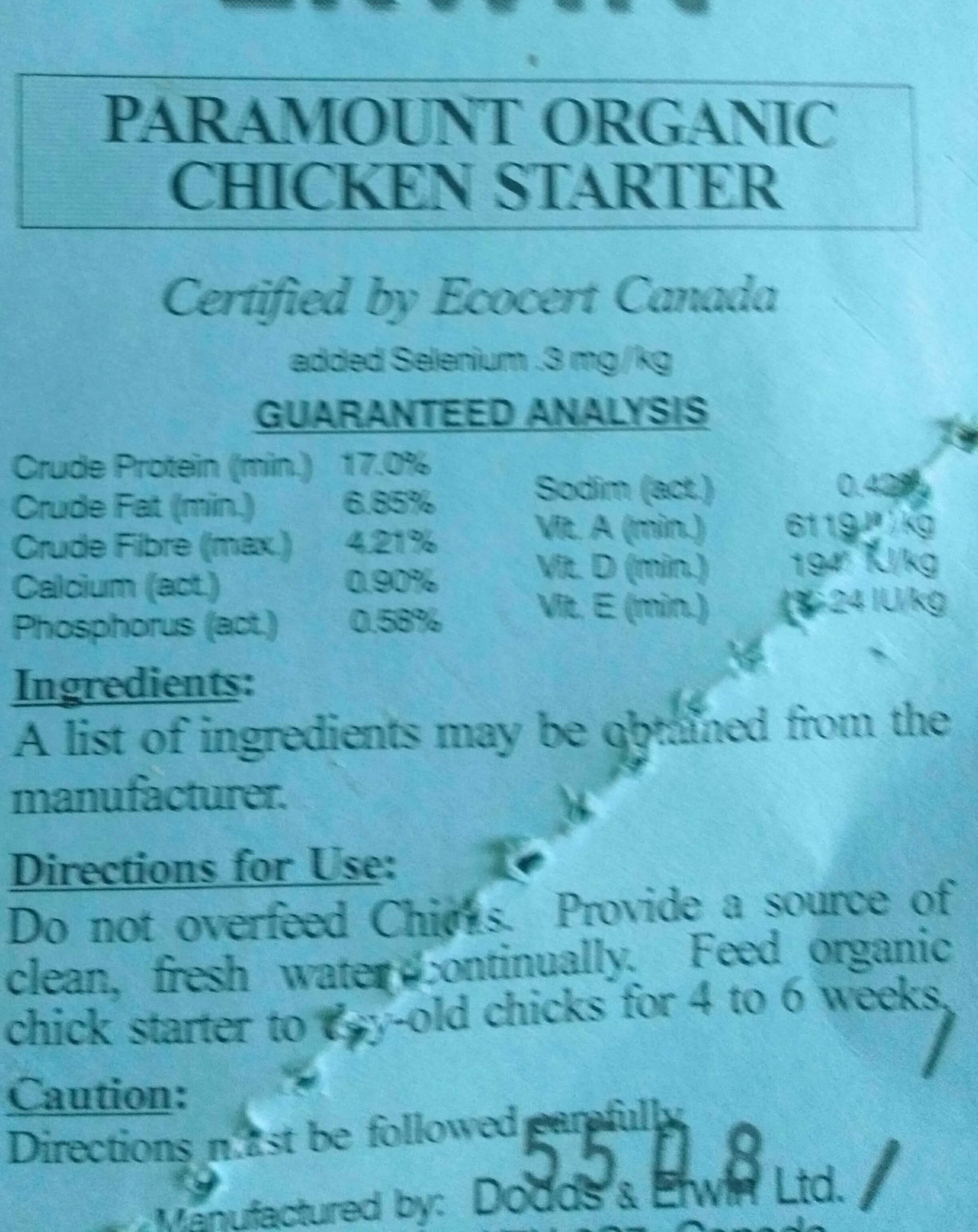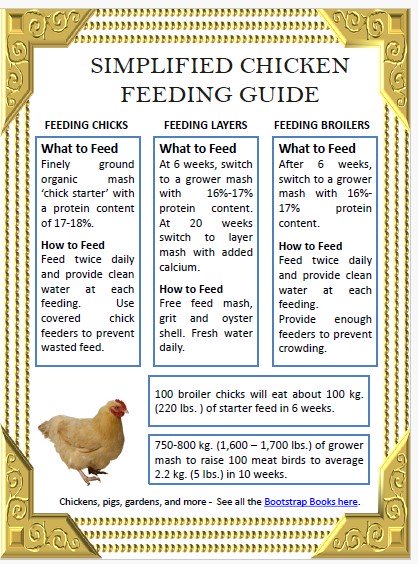How Much to Feed Chickens: A Practical Guide for New Flock OwnersWe’ve been raising laying hens and meat chickens for more than 20 years. I still get a kick out of seeing those little peepers every year. Getting chickens is exciting—until you're in the feed store wondering, “How much do these fluffballs actually eat?” Feeding chickens isn’t just about loading on the grain and hoping for the best. It’s about balance, timing, and knowing when you’re overdoing it (or underfeeding). This page will show you how much to feed chickens for a happy, healthy flock. Understand the Basics First
Feeding chickens isn’t complicated, but it’s not one-size-fits-all either. Age, breed, purpose (egg layers vs. meat birds), and even the season can influence how much feed your birds need. Here’s the basic idea: Chickens need regular access to a nutritionally balanced feed—especially formulated for their stage of life. While our meat birds are raised on pasture, and our laying hens are free-range, we still feed them a complete diet of organic mash to ensure health and growth. We’ve learned (the hard way) that guessing leads to wasted feed, broken eggs, or worse, sick birds. So let’s get specific about what your birds need on a daily basis. Daily Feed Amounts by Life Stage
 Read your feed bag tags for protein content Read your feed bag tags for protein contentHere’s a handy guide to help you portion like a seasoned chicken keeper. This is a general guide, based on how much organic mash we feed our birds. Let's start by explaining the feeds we use (all organic of course): Chick Starter: Finely ground organic mash with a protein content of 18%-19%. Chick Grower: Ground mash with 16%-17% protein content. Layer ration: Ground mash with 16% protein content and added calcium. Feed Per Day Per Bird How much to feed chickens chart How much to feed chickens chartAmounts will vary depending on your feed composition. Always check the feed bag and with your helpful feed store staff for guidance. You rarely raise just one bird so lets put this in terms of a small flock to give you a better idea of the amount of feed needed. Here’s (approximately) how it works with my birds. A flock of 25 chicks would start out consuming about 13-14 ounces of feed a day. I split this into two feedings, morning and evening. Increase feed by about 25% a couple times a week for 4 weeks until they cap out on starter feed at about 3.5 – 4 lbs a day. lbs. daily.
Follow a similar feeding pattern for meat birds after the 4 weeks. Increase feed regularly until they are ready to be shipped. 25 meat birds will eat about 450 lbs. of grower feed from 4 weeks to about 10 weeks. Our birds usually dress at about 5 lbs. on average at 10 weeks. Be guided by observation. If the birdies have left feed behind when comes to the next feeding, don’t increase the feed amount until they clean it all up. Similarly, they should be interested at feed time but not velociraptor-hungry. 25 laying hens will need about 5-6 lbs. of layer ration daily. I feed them once daily in the morning, and supplement with free choice oyster shell for the added calcium. In the snow months when the birds spend more time inside, I also supplement with grit to aid their digestion. Feeding Chickens Checklist 🐔✅
Use this as your go-to routine: ☐ Fresh feed daily (remove any damp or moldy leftovers) ☐ Clean water 24/7 (they drink more than you think!) ☐ Correct feed type for their age and purpose ☐ Calcium supplement (like oyster shell) for laying hens ☐ Grit if they don’t free-range (helps digestion) ☐ Treats e.g. surplus pastry, bread - max 10% of diet (they’ll love you, but keep it minimal) ☐ Secure feed storage to prevent rodents and moisture incursion ☐ Observe eating habits. Meat birds should clean up their feed in 15 minutes or so. Common Feeding Mistakes (And How to Avoid Them)
We’ve made ‘em all—so you don’t have to. Overfeeding: Beyond a certain point, more feed doesn’t mean faster growth. Meat birds are eating machines, and too much feed can result in conditions like flop-over i.e. a dead bird. Switching Feed at the Wrong Time: Don’t skimp on starter ration, the little chicks need that extra protein for steady growth Skipping Water Checks: A dry waterer for even a few hours in hot weather can stop egg production or even kill your birds. A friend of mine lost 75 nearly full-grown meat birds when his automatic waterer stopped working on a VERY hot day. Final Thoughts: Feed Well, Flock Happy (Same Rule For Teenagers)Feeding chickens right isn’t hard once you get the rhythm. It’s mainly about observation, making small adjustments, and establishing a steady routine. The more you pay attention, the more your flock thrives—and the more confident you become as a keeper. Remember, every chicken keeper starts somewhere (we all had that first “how much to feed chickens?” moment). You’ve got this! You can find out more about raising meat chickens here. And check out all the Bootstrap Books here. More Resources for the Small GrowerChapter 14 - Introduction to Chickens: The Self-Sufficient Backyard Raise chickens, pigs and a productive organic garden: The Homesteader Book Bundle If you can find 50 sq ft, you can have fresh egg for breakfast (and maybe barter): The Eggs Factory If you need to build it on your homestead, the plans are here: 16,000 Woodworking Plans See something you like? Share!Questions, comments, stories to tell about raising chickens for meat?Share your question, or comment, or story about raising meat chickens. Recent Articles
|




